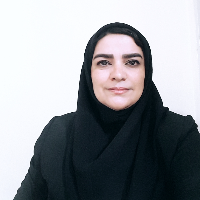Investigation of Livability Indices in historical and Worn-Out Texture of Urban Neighborhoods Case study: District 12 of Tehran Metropolis
Following many changes in the economic, social and technological fields and the consequences of the influx and concentration of populations and activities in the central part of the cities, these textures suffered physical, economic and social decline. This process caused that over time, the old textures lost their dynamism and vitality and the old urban neighborhoods became low and problematic ones and became unbalanced, unable to meet the new needs of urban communities. In addition, it should be noted that these neighborhoods are on a path of stagnation and backwardness for reasons such as the traditional texture of the road network, the deterioration of residential units, the weakness of infrastructure and environmental problems. The combination of these factors has reduced the desirability, viability and vitality in these textures. Historical and worn-out textures within the old and middle parts of cities due to their special economic, social and physical conditions, have caused depreciation and deep gaps with other urban parts. Declining social and economic status and functional and physical disorders of these textures, along with a very sharp decline in the environmental quality of the urban environment, has made it necessary to pay more attention to the livability of these areas of the city. Since most of the historical and worn-out texture of Tehran is located in district 12, this area has been selected as an example. The prominent manifestation of this area is the district 12 of Tehran, which is considered as the "main part of the historical center of it" and the establishment of many parts of services (urban and metropolitan scale of Tehran) in the mentioned area and also allocating large surfaces of it to trans-regional land uses and higher levels have reduced the quality of life and livability. Therefore, the purpose of this study is to investigate the indicators of livability between urban neighborhoods in the worn-out fabric of district 12 of Tehran. In line with the purpose of the research, this question answers which of the neighborhoods of District 12 of Tehran is in a more desirable situation in terms of urban livability indicators?.
The present research is an applied and descriptive-analytical one in terms of purpose and method, respectively and in its implementation, a survey method has been used. Also, data and information were collected through documentary-library and field methods (using a questionnaire). The statistical population studied in the research is residents of worn-out texture of district 12 of Tehran Municipality. According to the 2016 census report, the population of district 12 of Tehran is equal to 240,909 people and the area of the region is 1600 hectares, of which 568 hectares are historical, worn-out and inefficient urban structures. With this calculation, it can be acknowledged that more than 35.5% of the population of the region is in a worn-out and inefficient texture, which includes a population about 85,522 ones. The sample size was 384 based on Cochran's formula. face and content validity were confirmed by professors and related experts and reliability based on Cronbach's alpha was obtained 0.726.
In order to identify the general status of effective individual and social security indicators on livability in the historical and worn-out neighborhoods of district 12, one-sample t-test has been used. The purpose of this test is to assess the acceptability of livability indicators in the district 12 from the point of view of neighborhoods’ residents. The study of the livability of the historical and worn-out texture of the neighborhoods of district 12 in terms of individual and social security indicators shows that the status of indicators in the region is inappropriate and unfavorable because the average of the study of individual and social security indicators is lower than the calculated average value. The map obtained in the indicators of individual and social security indicates that the northern neighborhoods of the region, including Shemiran, Baharestan and Ferdowsi neighborhoods, are in a desirable situation, while the southern neighborhoods, including Harandi, Kowsar and Takhti ones, are in an inappropriate situation. The study of the indicators of educational facilities in district 12 expresses that due to the difference between the assumed average and the real one, the status of the educational facilities indicators is equal to the average, so it can be said that the desired dimension in the city is generally suitable because the average of the study of educational facilities in the district is 12 times the calculated average value. The distribution of undesirable and desirable status of this index in the district shows that the index of educational facilities in district 12 is in an appropriate condition; so that Baharestan and Imamzadeh Yahya neighborhoods are in favorable status and Takhti and Pamanar ones are in undesirable condition in terms of educational indicators.
In this study, the evaluation of worn-out neighborhoods according to urban livability indicators from the perspective of citizens has been done. The results of the present study indicate that district 12 is generally in a relatively desirable status in terms of livability indicators. Also, the extent and dispersion of spots of desirable and undesirable status indicate the relatively favorable condition of the components used in the research in district 12. This issue is more visible in Baharestan neighborhood. In contrast, Bazaar and Pamanar neighborhoods are in an inappropriate situation in terms of livability indicators. According to the research findings, the infrastructure facilities and transportation components with the highest utility, respectively, are the most effective ones on the livability of district 12 and the individual and social security, identity and sense of place components with the least utility are the least effective ones on the livability of the district.
- حق عضویت دریافتی صرف حمایت از نشریات عضو و نگهداری، تکمیل و توسعه مگیران میشود.
- پرداخت حق اشتراک و دانلود مقالات اجازه بازنشر آن در سایر رسانههای چاپی و دیجیتال را به کاربر نمیدهد.


